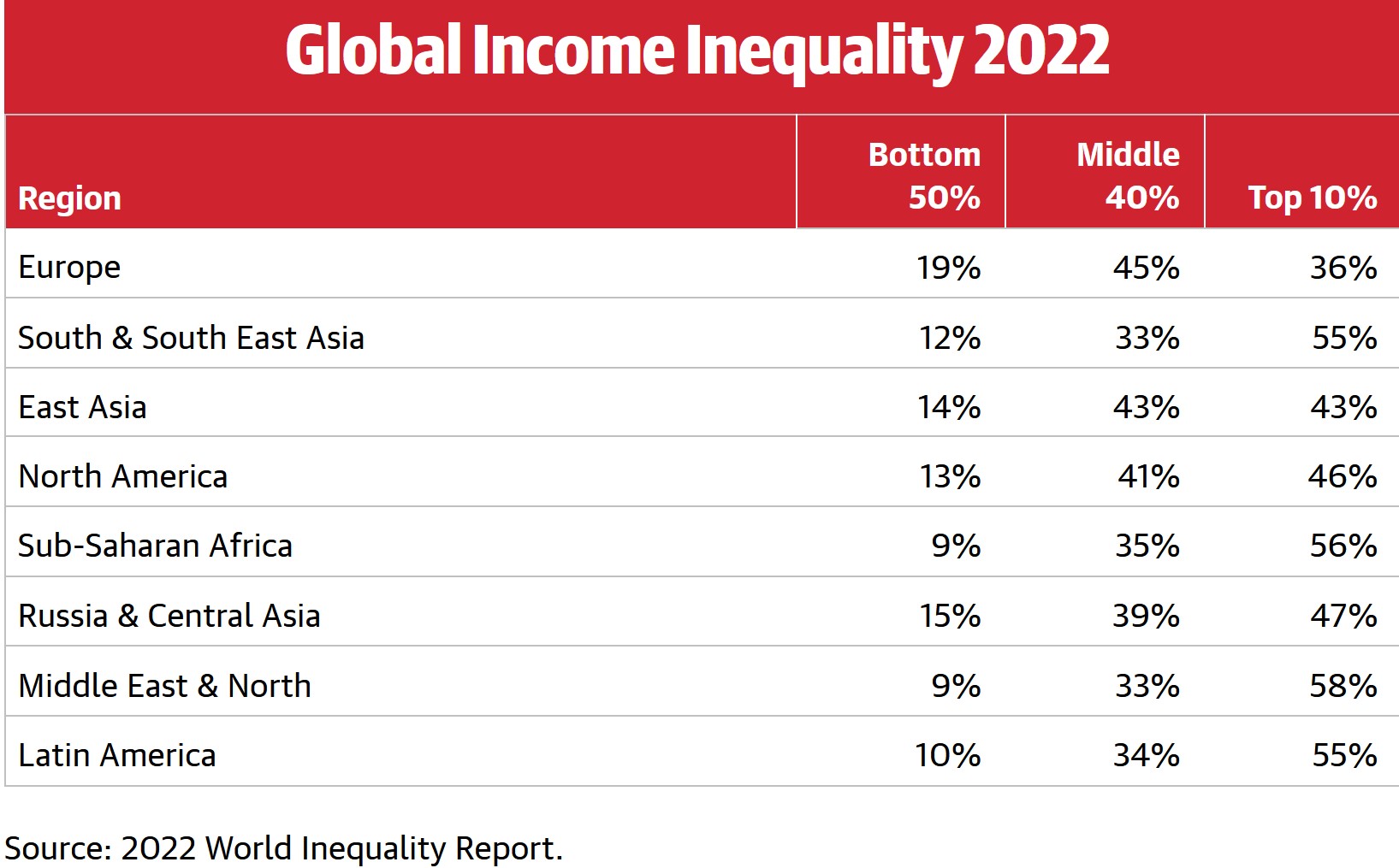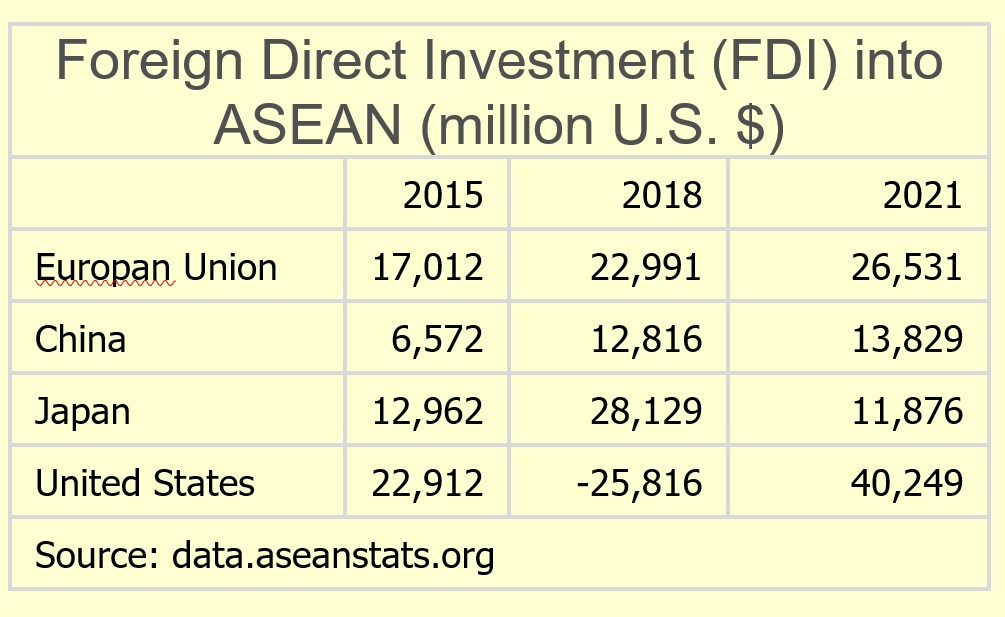|
Asia and the Pacific Area: The Asian Century? According to Woetzel and /Seong, "In the nineteenth century, the world was Europeanized. In the twentieth century, it was Americanized. Now, it is being Asianized – and much faster than you may think." During the past decade, its share of world trade increased from about 25% to 33%; it's share of capital flows from 13% to 23%; and it's share of airline travel from 33% to 40%. By 2040, Asia may generate more than 50% of global GDP.Map: Asia including Russia, east of UralsMap: Asia and its subregionsAsian GDP per Capita TrendsHeritage Foundation Economic Freedom IndexEconomist Intelligence Unit Democracy Index 2020Map: Asian Major Religions
I. Religion and CultureA. Asian polytheism and syncretism vs Western monotheismB. Hinduism - Lives full of suffering and pain. Accumulate record of spiritual understanding and action, or karma, to unite fully with Brahman. Requires more than a single lifetime, so reincarnation.C. Buddhism --Arose within Hinduism.1. Theravada -- conservative sect resisted departure from ancient scripture or ritual, spread from India into Southeast Asia. Today, dominant in Cambodia, Laos, Singapore, Sri Lanka, Thailand, and Vietnam.2. Mahayana --new scriptures, more flexible --China, Korea, and Japan.3. Vajrayana -- elaborate ritual-- influenced Mongolia and Tibet.D. Taoism - Similar in some ways to Hinduism-Buddhism; encourages a simple style of life. However, seek social harmony with a policy of "strength through weakness," extending individual freedom and spontaneity.E. Confucianism - Practical social ethics, based on mutual obligations of servants and masters. Respect for knowledge. Hierarchical influence in Chinese society; spread with Taoism to Korea, Japan, and Vietnam.F. Islam -- Dominant in Bangladesh, Indonesia, Malaysia, and Pakistan. There's also a large Muslim population in India that has suffered violence and discrimination from the Hindu majority - especially under the recent influence of Prime Minister Modi.G. Christianity -- dominant in Australia, New Zealand, Papua New Guinea, and the Philippines, and accounts for 29% of the population of South Korea.
Poor performance of India and Nepal MAY be explained, in part, by aspects of Hinduism. Caste system restricts mobility and opportunity - but there's more to the caste system than Hinduism. Currently, the Hindu parties in India are resiting calls for restricting population growth - emphasize the importance of outnumbering the Muslims. East Asian countries may combine the strengths of Confucianism and a moderate form of Buddhism. However, until the 1980s, average incomes evidently were higher in Hindu India than in Confucian (but also Maoist) China.II. ColonialismA. South Asia1500 B.C., Aryan invaders absorbed/destroyed the aboriginal Indus Valley civilization.326 B.C., Alexander the Great left Greek outposts, facilitating trade and cultural exchange.700s, A.D., Moslem invaders entered, developed Moghul empire.1100s, AD, merchants from Venice and Genoa established contacts.1298, Marco Polo, Description of the World, publicized riches of the Orient1498--Vasco da Gama of Portugal found his way around Africa to India.1600--English East India CompanyCreated elite of educated civil servants and professionals. Encouraged production of raw materials for British factories. Organized construction of canals, roads, railways.1920--Mahatma Ghandi gained control of National Congress; led fight for independence. After World War II, Britain ready to surrender.Economic and social benefits to India--strengthened transportation and higher education. Evidence shows costs from colonial priorities and taxes.B. Colonialism in Southeast Asia and the PacificSixteenth century, Portugal established outpost on the Malay peninsula.Spain arrived in 1571, conquered the Philippines.Seventeenth and eighteenth centuries—Dutch dominant.1770--British claimed possession of Australia1878 –U.S. Samoa, 1898, Spanish-American War, U.S. gained Spanish colonial holdings in the Philippines and Guam.Thailand (Siam) only nation in Southeast Asia to avoid domination.C. Colonialism in East AsiaWestern colonialism had important impact, but less important than in South and Southeast Asia.III. Asian Cooperation and SocialismEast Asian societies combining Confucianism with Mahayana Buddhism seem to encourage highest levels of social cooperation. By promoting educational opportunity, emphasizing group over individual, and encouraging leaders to serve inferiors, Confucianism seems to encourage cooperation and equality of income. East Asian countries overturned conventional view that income inequality supports economic growth.In China, the home of Confucianism, history of communitarianism. During Taiping Revolution (1850-1864), peasant campaign against unfair land holdings, excessive taxes, and foreign imperialism. Taiping rulers attempted to abolish private ownership of land and other property, proposing equalitarian land tenure.1897, influenced by British Fabian Socialists, Dr. Sun Yat-sen included socialism, together with nationalism and democracy, among the Three Fundamental Principles that would lead Nationalist Party in revolution against Manchu rule.Marxian socialism gained popularity in Chinese intellectual circles after the Russian revolution. In 1918, Li Dazhao established socialist New Tide Society.1949, Nationalist party established government in Taiwan and Communist party, led by Mao, established the People's Republic of China on the mainland.In India, socialist programs were supported by Mahatma Gandhi (1869-1948), who was instrumental in the nonviolent struggle for independence, and Jawaharlal Nehru (1889-1964), who was the first Prime Minister after independence in 1947. Both were exposed to Fabian Socialism in England. Condemned caste. Nehru followed policies of the British Labor party. Thus, Nehru's model of socialism was more urban, more industrial, and more oriented toward social modernization. Generally, the Congress Party, which has been dominant during most of the years since WWII, has followed moderate social democratic policies, and maintained close relations with the Soviet Union. Now, under the more Hindu-nationalist leadership of Narendra Modi and the BJP Party, they still have a close relationship with Putin in Russia.IV. Asian Growth MiraclesA. CultureB. Government –1. Neoclassical Washington Consensus view -- Asian growth supported by "market friendly" government policies, avoiding regulation of prices, interest rates, rents, and other payments, and by maintaining small budget deficits, stable monetary policies, low levels of foreign debt, and low barriers to internal and external trade.2. Opposing interpretation-- developmental states --industrial policies. World Bank, The East Asian Miracle: Economic Growth and Public Policy (1993), strong and intelligent bureaucracies contributed to growth. No broader evidence for industrial targeting.C. Trade Policy --Export led, but sometimes included import substitution.D. Saving and Investment1. Neoclassical view -- saving and investment in NIEs grew spontaneously when NIEs gained independence from colonialism and they introduced market-friendly policies.2. Cultural view -- frugality encouraged by Confucian heritage and survivor mentality.E. Income Distribution1. Challenge to conventional wisdom on inequality and growth. Inequality lower in high-growth Asia than in low-growth Africa or Latin America, and inequality declined in Singapore, Malaysia, and Hong Kong.2. Perhaps, Asian growth encouraged by same policies that reduced inequality, and growth encouraged by equality itself.a. Growth and equality both supported by programs of public health and education, land reform, trade liberalization, and support for small business.b. Income equality contributes directly to economic growth by strengthening political stability, reducing chance of political stalemate, preventing progress in divided societies, and by reducing demands for protectionism.  V. Regional Economic Integration
|

